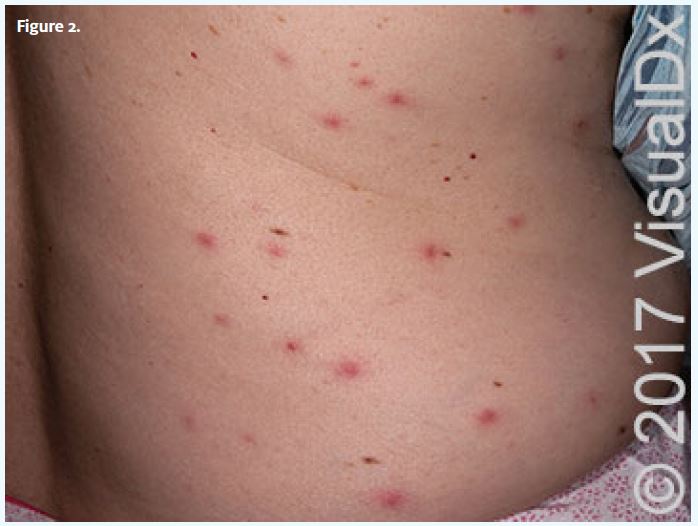Published on
- Allergic contact dermatitis
- Molluscum contagiosum
- Pseudomonas folliculitis
- Miliaria rubra
Diagnosis
The image shows evidence of Pseudomonas folliculitis, which is backed up by the other findings described. Also known as hot tub folliculitis, this is a subset of folliculitis (inflammation of the hair follicle), wherein hair follicles are infected with Pseudomonas bacteria. Outbreaks occur most commonly in people after bathing in a contaminated spa, swimming pool, or hot tub. It can also be associated with the use of contaminated loofah sponges (ie, one that remain constantly wet in the shower) and contaminated water in the workplace. It also can be seen with higher incidence in patients on long-term antibiotic therapy for acne vulgaris.
Learnings
- Pseudomonasfolliculitis is characterized clinically by tender or pruritic folliculocentric papules preferentially localized to the trunk, buttocks, and extremities
- Typically, symptoms develop within 1─4 days after exposure to the contaminated water source
- Infection can be associated with mild fever, malaise, lymphadenopathy, and leukocytosis. The cutaneous eruption usually fades within 7-14 days without therapy
- Water sources contaminated with Pseudomonasare also associated with outbreaks of painful plantar nodules termed the “Pseudomonas hot-foot syndrome.” These patients may or may not have a concomitant folliculitis.
- There is no geographic distribution of Pseudomonas However, with hot tubs and natural hot springs popular among travelers and pyodermas (purulent skin diseases) being among the most frequently reported complaints in returning travelers, probing for such activities may be advisable in patients with similar symptoms
Clinical Challenge 3: October 2017
1 2

